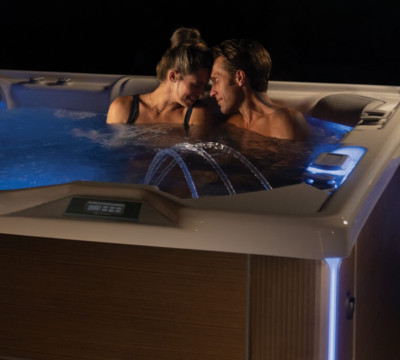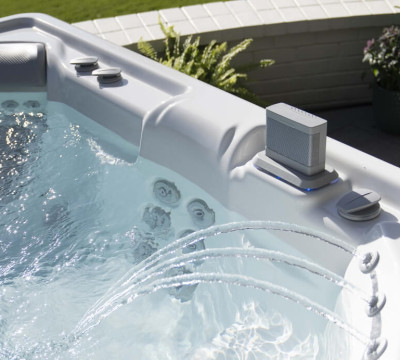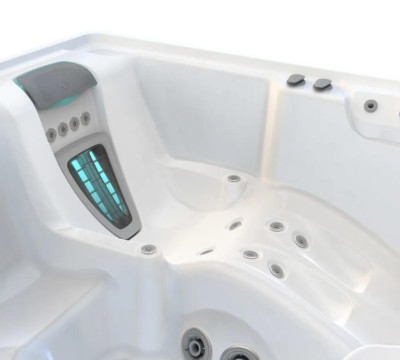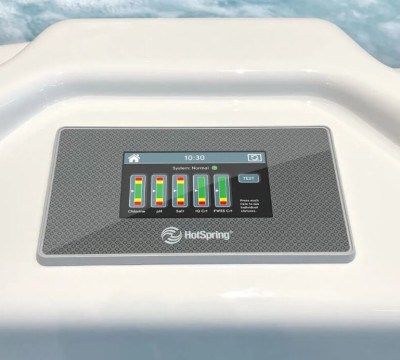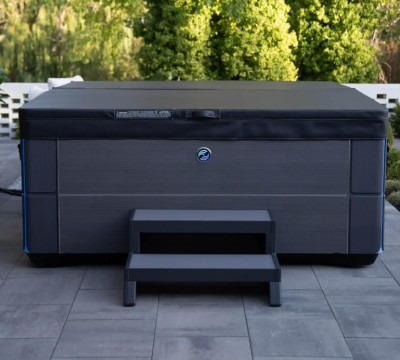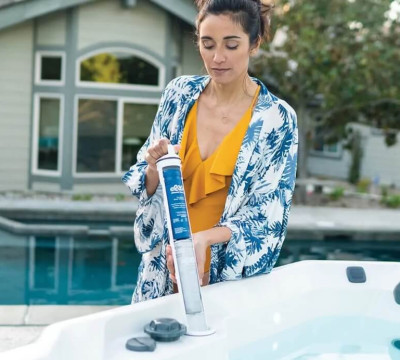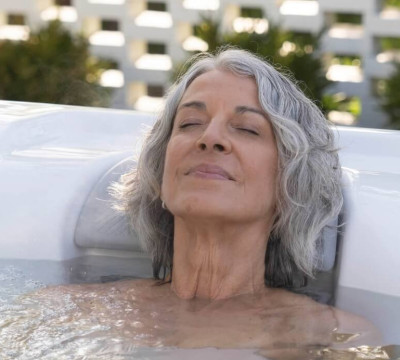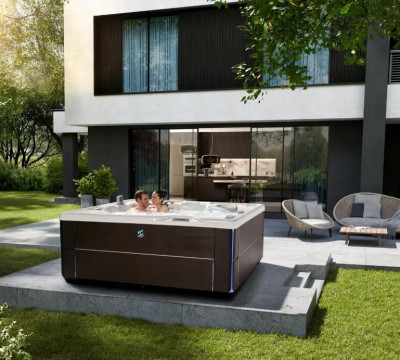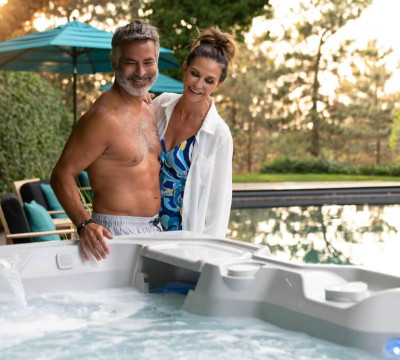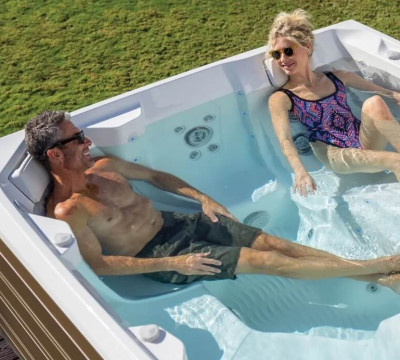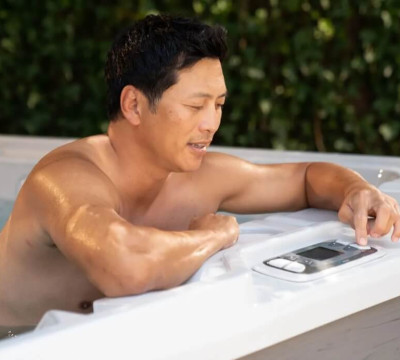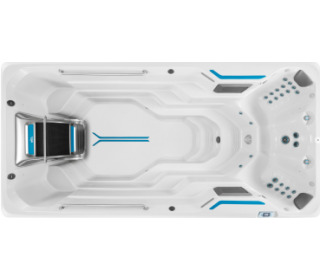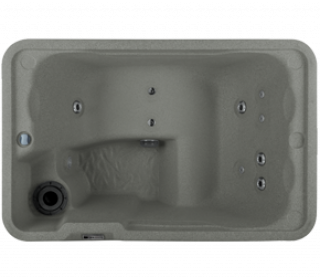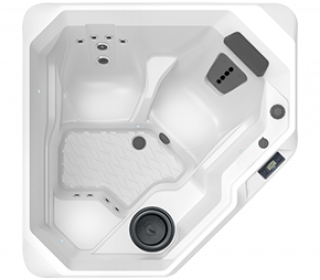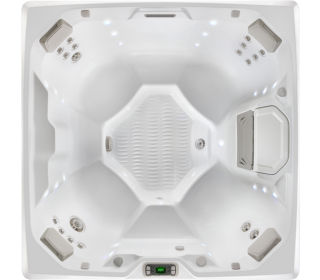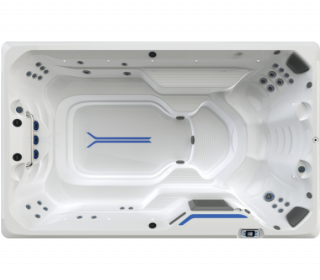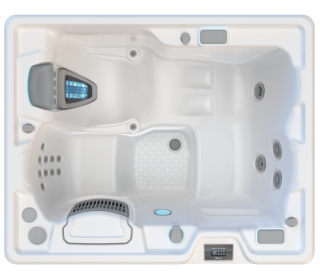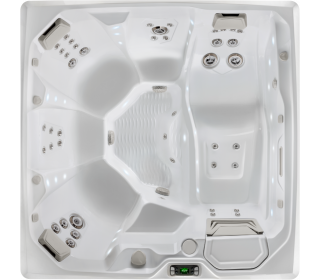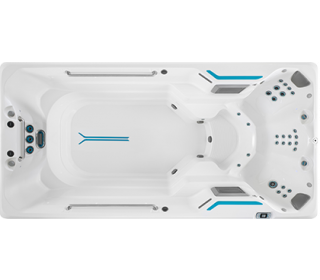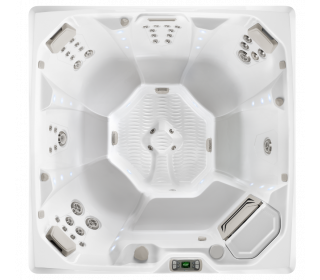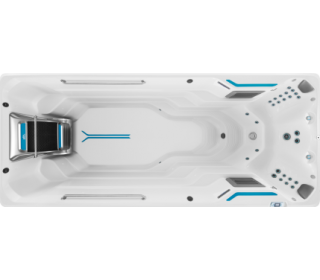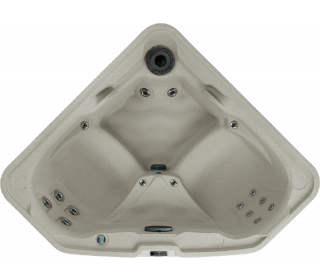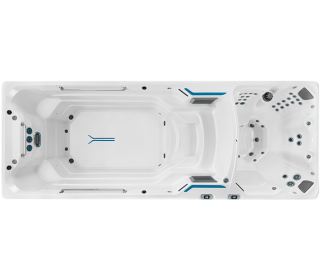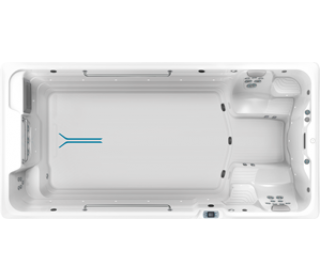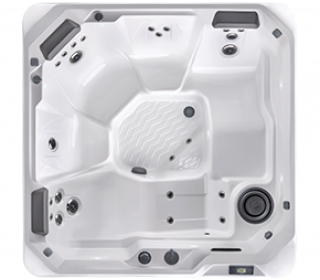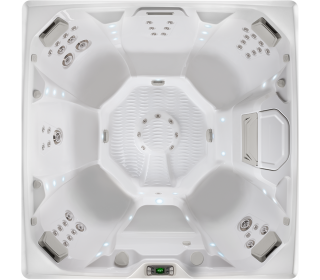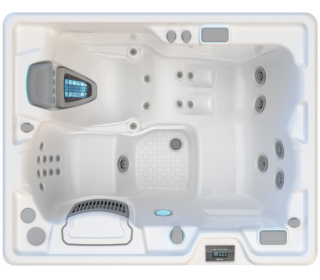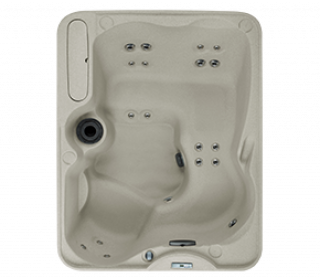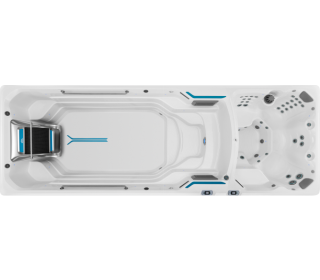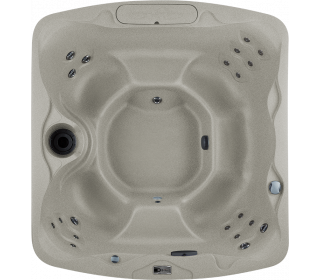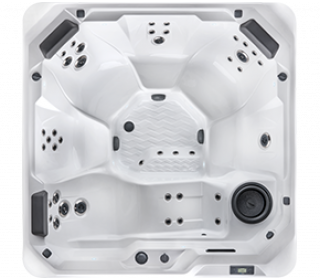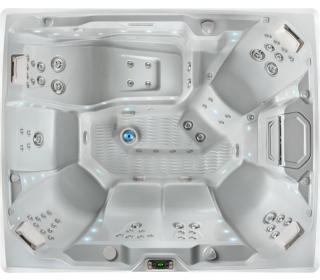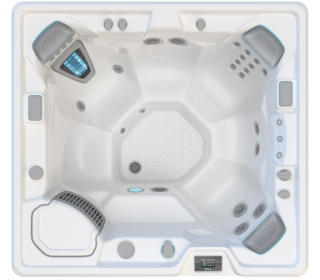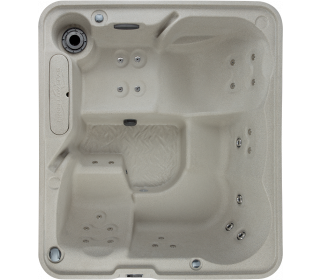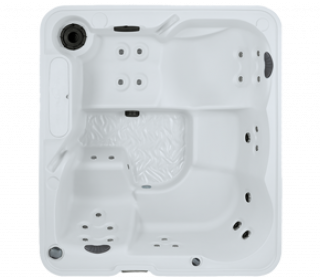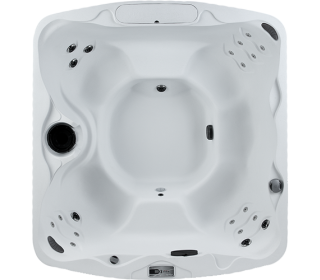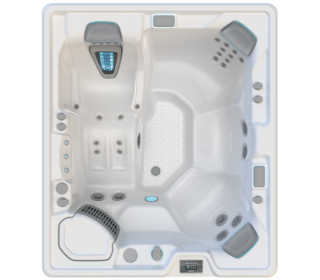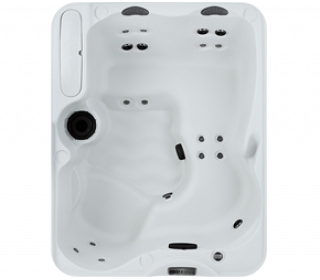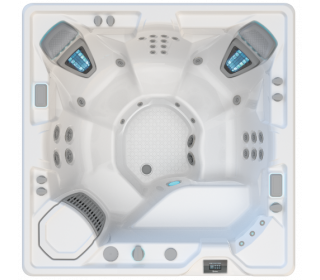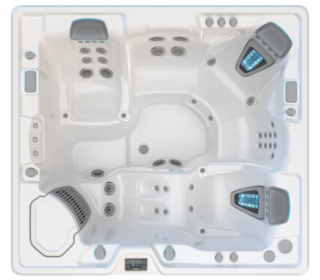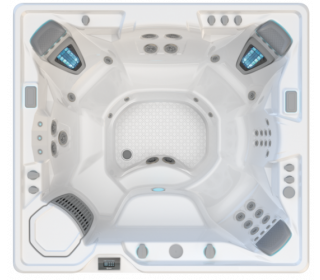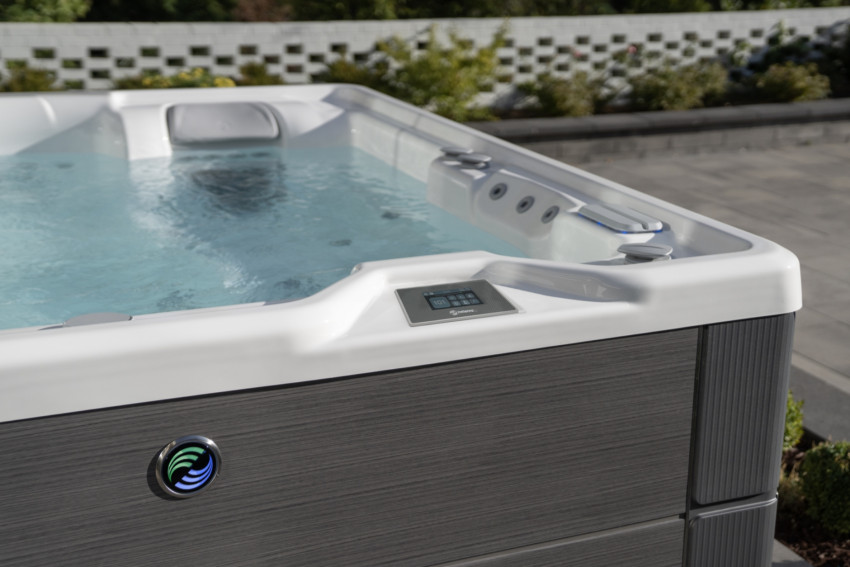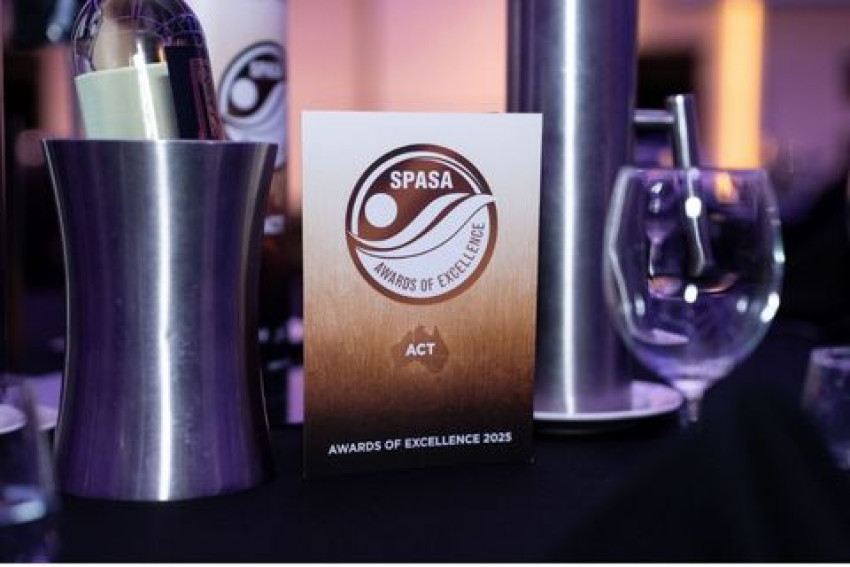Spa pool pumps are one of the primary components of your spa pool. Spa pool pumps are responsible for powering the jets and circulating the water, like an engine.
The spa pump consists of two parts: the wet end and the dry end.
The wet end contains a key moving part, the impeller, and a motor to turn the impeller. This helps push water through your spa circulation system which is important for maintaining clean filtration along with the overall quality of your spa water. The dry end houses the motor in a sealed environment which protects it from moisture.
Generally, spa pool pumps can last from 5 to 10 years if spa water is maintained correctly. The pumps in our Highlife® Collection can last up to 20 years.
How do spa pool pumps work?
Generally, most spa pool pumps are dual-speed pumps, operating at both fast and slow speeds as needed. They should also run quietly.
A spa pool pump function is to mix chemicals in the spa pool and at the same time, pump water through the heater and any jets present.
Unlike other off the shelf pumps found in other spa brands, Hot Spring jet pumps are built to higher specifications. This improves the performance at the jets and extends the life of the pump.
The equipment compartment in a Hot Spring spa is fully insulated so the pump operates at around 40-45 degrees, always. This is to prevent condensation and moisture from forming when outside temperature drops which causes rust and corrosion to important spa components and electronics.
In addition the pump captures the heat from the equipment compartment and puts it back into the spa water while jets are in operation to retain heat in your spa water for much longer.
See our guide on How to tell if your spa pool filter is working.
Another form of spa pool pump is a circulation pump, such as our SilentFlo 5000. While circulation pumps are far less powerful than jet pumps, they are designed to run all the time, helping to keep your water fresh and filtered, and to reduce wear and tear.

Why do I need the pump in my spa to run?
In some ways a spa pool pump is the defining feature of the machine, as a spa pool without a working pump isn’t a spa pool at all – it’s a bath! By moving the water, the pumps create the bubbling, massaging soaking experience that we all know and love.
There are a few roles that pumps fulfil in a spa pool which change depending on the pump:
Jet pumps
The main role of jet pumps is to provide the necessary pressure for the hydromassage jets, but they can also:
- Help to avoid water stagnation, and the bacteria, algae and fungus growth that can result.
- Help to mix spa pool chemicals into the water.
- In the case of Hot Spring hot air induction jets, the pump can help to heat your spa pool faster by transferring warmth from the internal machinery to the water.
Circulation pumps
Circulation pumps are designed to keep water moving constantly, which offers a number of key benefits:
- Your water is constantly being filtered, staying clean of dirt, debris and other intruders.
- Water won’t stagnate and will stay clean, clear, soft and fresh for longer.
- With the water already moving, the jet pumps don’t need to work as hard to start, which lowers noise.
- Giving your jet pump a running start can also reduce internal wear and tear and make your machine last longer.
Can I leave my spa pool pump running all the time?
Do hot tub pumps run all the time? In the case of a circulation pump, yes. These are designed to run 24/7, gently filtering your water and keeping it moving. And by choosing a Hot Spring model fitted with the SilentFlo 5000 system, you’ll do this while using less energy than a 40W light bulb.
Spa pool pumps designed to power hydromassage jets are a different story. How long should a spa pump run per day? The answer is simply for however long there are people in the spa pool! That said, if you haven’t had a soak for a week or so it’s wise to turn the pump on to keep the water moving through the pipes and avoid any unwanted buildup of grime, limescale, bacteria and fungus.
Common spa pool pump problems
If you choose a high quality spa pool like a Hot Spring it will rarely break down. Nevertheless, some issues may arise, and it’s important to know what to do if they do.
If you experience an issue with your spa pool, your first step is always to check for any warning lights or messages on the control panel. If a light or message comes up, consult your owner’s manual on what to do next. If you can’t see a message or light, the fix will depend on the issue at hand. Spa pool pump problems include:
The pump is very noisy
While the hot tub pumps designed to run jets can be boisterous because they’re so powerful, you’ll know when a pump sounds louder than it should, and this can be a sign that there’s an issue with it. Begin by turning off the pump, checking that all the jets are clear of obstructions, then turning the pump back on again. If the noise persists, it could be a sign of an airlock (which can be fixed with this method on Hot Spring machines), or a deeper issue, in which case it’s wise to get in contact with your local dealer.
The water is not circulating
If you turn your pump on but the water doesn’t circulate and/or the jets don’t work, the issue is most likely either a blockage or a mechanical failure within the pump. Clean your spa pool jets and attempt to get rid of any airlocks. If the issue persists, contact your local dealer.
The pump is not running
If your pump is not running at all, first check that the machine is connected to power and turned on. If it is on, turn the spa pool off at the wall, leave it off for 30 seconds, then turn it back on again. If that fails to resolve the issue, get in contact with your local dealer.
How to make spa pool pumps last longer?
There are a few things you can do to make pool and spa products such as pumps last longer. Firstly, making sure that your water is balanced is essential. A high pH level can lead to more scale buildup in the water that ultimately clogs speed pumps, making them less effective.
Too low pH or acidic water will lead to corrosion or damage to most pumps and the spa pool itself. By maintaining water balance, you will ensure that your spa pump can work at optimal capacity without being damaged and protect the other components of your spa pool.

Cleaning spa pool filters is another way to make the pool pump motors last longer. Debris and dirt are a factor in pool pumps being blocked, so keeping the area clear of any potential obstructions is important. By cleaning the filters at least once a week, you can also ensure the longevity of your pipes. There are many other benefits of cleaning your filter that we have explored in a previous article here.
A spa pool pump is an integral part of the overall structure of the pool and its operation. Without regular maintenance and monitoring, the pumps may not last as long and become more ineffective over time.
Never scratch your head over spa maintenance again. Sign up today!


